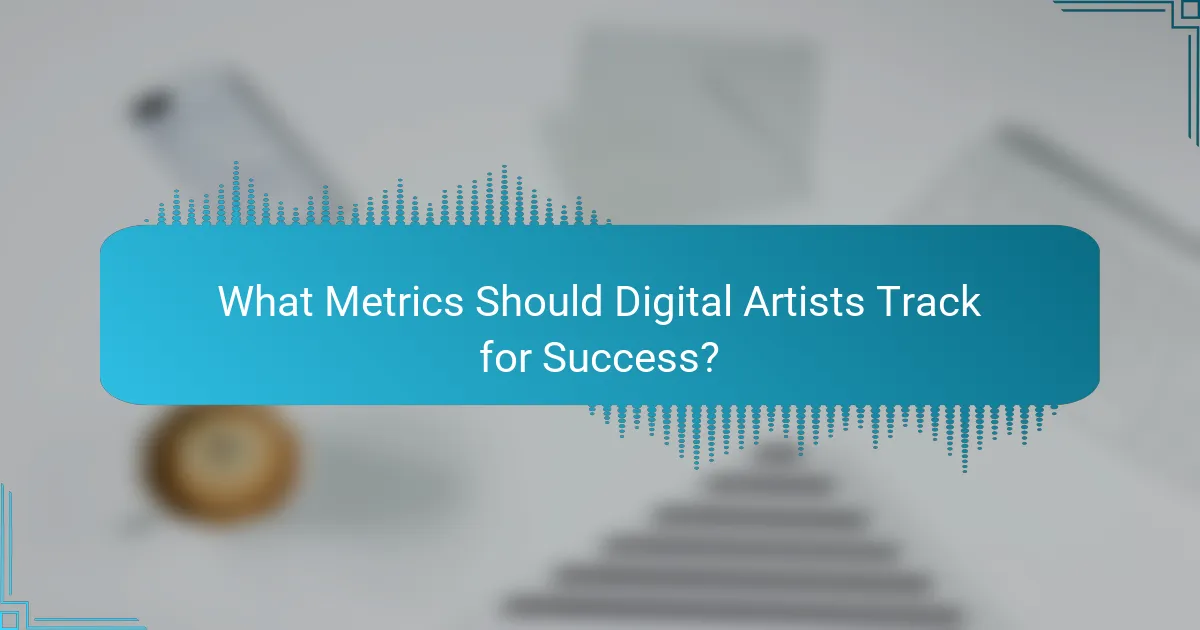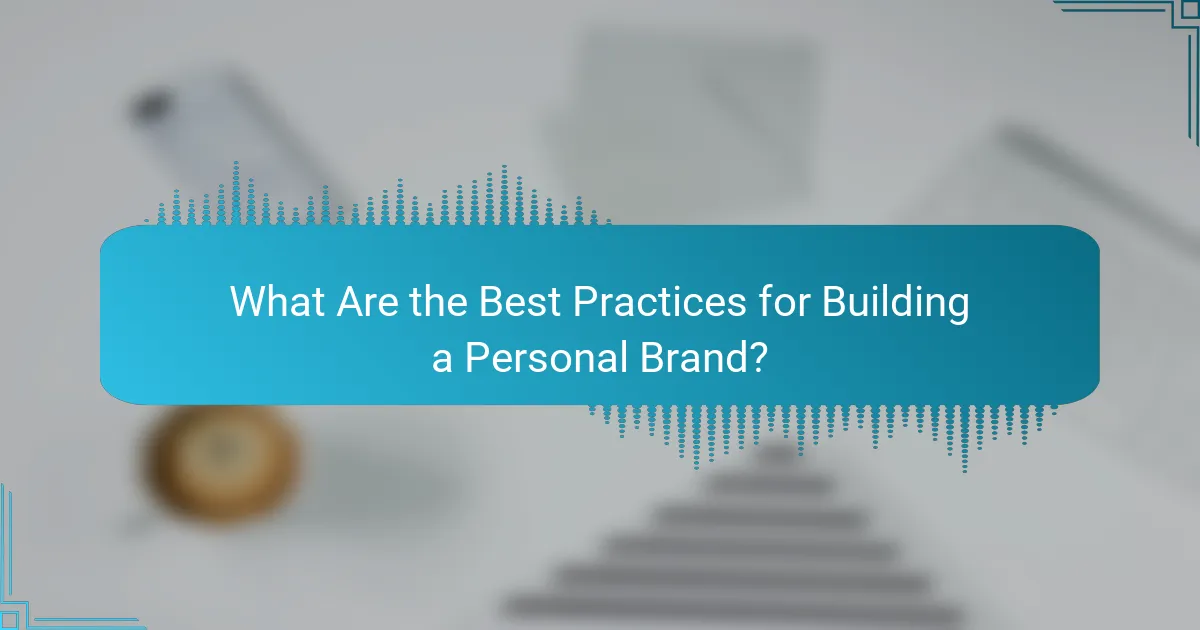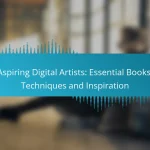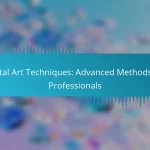In the ever-evolving landscape of digital art, social media plays a crucial role in shaping trends and promoting artists’ work. Key strategies include leveraging NFTs, engaging with communities, and utilizing video content to enhance visibility and foster connections. By adopting tailored approaches and maintaining consistent interaction, digital artists can effectively build their online presence and drive sales.

What Are the Key Digital Art Trends in Social Media?
Key digital art trends in social media include the rise of NFTs, augmented reality applications, community engagement strategies, video content integration, and sustainability efforts. These trends shape how artists promote their work and connect with audiences, influencing both visibility and sales.
Rise of NFTs
The rise of non-fungible tokens (NFTs) has transformed how digital art is bought and sold. Artists can now tokenize their work, allowing for ownership verification and unique sales opportunities. Platforms like OpenSea and Rarible have become popular marketplaces for artists to showcase and sell their NFTs.
When creating NFTs, artists should consider the environmental impact of blockchain technology and choose platforms that prioritize sustainability. Additionally, understanding the legal aspects of copyright and ownership in the NFT space is crucial to protect one’s work.
Increased Use of Augmented Reality
Augmented reality (AR) is becoming a powerful tool for digital artists, enabling them to create immersive experiences. Artists can use AR to overlay digital artwork onto the physical world, enhancing viewer engagement. Apps like Instagram and Snapchat offer AR filters that artists can leverage to reach wider audiences.
To effectively use AR, artists should focus on creating interactive and visually appealing content that encourages user participation. Collaborating with AR developers can also help in bringing more complex ideas to life.
Focus on Community Engagement
Community engagement is essential for digital artists looking to build a loyal following. Platforms like Discord and Patreon allow artists to interact directly with fans, fostering a sense of belonging and support. Engaging with followers through live streams, Q&A sessions, and behind-the-scenes content can deepen connections.
Artists should prioritize consistent communication and actively seek feedback from their community. This two-way interaction can lead to valuable insights and ideas that enhance their work and promotional strategies.
Integration of Video Content
Video content is increasingly important in promoting digital art on social media. Platforms like TikTok and YouTube allow artists to showcase their creative process, making their work more relatable and engaging. Short video clips can capture attention quickly, which is vital in today’s fast-paced digital environment.
Artists should consider creating time-lapse videos, tutorials, or storytelling content around their art. This not only showcases their skills but also provides value to viewers, encouraging shares and increasing visibility.
Emphasis on Sustainability
Sustainability is becoming a significant concern in the digital art community. Many artists are adopting eco-friendly practices, such as using sustainable materials for physical art or supporting platforms that offset their carbon footprint. This trend resonates with environmentally conscious consumers.
To align with sustainability goals, artists can highlight their eco-friendly practices in their marketing. Collaborating with organizations focused on environmental issues can also enhance credibility and attract like-minded audiences.

How Can Digital Artists Promote Their Work on Social Media?
Digital artists can effectively promote their work on social media by leveraging various platforms and strategies tailored to their audience. Engaging content, consistent posting, and interaction with followers are key to building a strong online presence.
Utilizing Instagram Reels
Instagram Reels are a powerful tool for digital artists to showcase their creative process and finished pieces in short, engaging videos. By using trending audio and hashtags, artists can reach a wider audience and attract potential buyers.
To maximize impact, consider posting Reels that highlight time-lapse creations, behind-the-scenes snippets, or tutorials. Aim for a posting frequency of at least once a week to maintain visibility and engagement.
Engaging with TikTok Challenges
Participating in TikTok challenges allows digital artists to connect with a vibrant community and gain exposure. These challenges often have specific themes or prompts that can inspire unique artwork, making it easier to create relevant content.
When engaging with challenges, use popular hashtags to increase discoverability. Collaborating with other artists or influencers can also amplify reach and foster a sense of community.
Leveraging Pinterest for Visual Discovery
Pinterest is an excellent platform for digital artists to showcase their portfolios and drive traffic to their websites or online shops. By creating visually appealing pins that link back to their work, artists can attract users searching for inspiration.
To optimize Pinterest use, focus on high-quality images and keyword-rich descriptions. Regularly update boards with fresh content and consider joining group boards to expand reach within niche communities.

What Are Effective Engagement Strategies for Digital Artists?
Effective engagement strategies for digital artists focus on building a community and fostering interaction with followers. These strategies can enhance visibility, create a loyal audience, and ultimately lead to increased opportunities for sales and collaborations.
Hosting Live Art Sessions
Hosting live art sessions allows artists to interact with their audience in real-time, showcasing their creative process. Platforms like Instagram Live or Twitch are popular for these events, where artists can demonstrate techniques, answer questions, and receive immediate feedback.
Consider scheduling these sessions at times when your audience is most active, which can vary by time zone. Promoting the event in advance through social media channels can also help boost attendance and engagement.
Creating Interactive Polls and Q&As
Interactive polls and Q&As are effective tools for engaging your audience and gathering insights on their preferences. Use features available on platforms like Instagram Stories or Twitter to create polls that ask followers about their favorite styles or subjects.
Encouraging questions during a Q&A session can also foster a deeper connection with your audience. Make sure to respond thoughtfully to inquiries, as this shows you value their input and encourages ongoing interaction.
Collaborating with Other Artists
Collaborating with other artists can expand your reach and introduce your work to new audiences. Joint projects, such as creating a piece together or hosting a shared exhibition online, can generate excitement and engagement from both fan bases.
When collaborating, choose artists whose style complements yours, and discuss how to promote the project collectively. This approach not only enhances creativity but also builds a supportive network within the digital art community.

What Tools Can Enhance Social Media Promotion?
Several tools can significantly boost social media promotion by streamlining design, scheduling, and visual planning. Utilizing the right platforms can help digital artists effectively engage their audience and enhance their online presence.
Canva for Graphic Design
Canva is a user-friendly graphic design tool that allows artists to create stunning visuals for social media. With a vast library of templates, images, and fonts, users can easily customize their designs to fit their brand identity.
When using Canva, consider taking advantage of its collaborative features, which enable team members to work together in real-time. This can be particularly useful for artists who want feedback or assistance from peers.
Hootsuite for Scheduling Posts
Hootsuite is a powerful social media management platform that allows users to schedule posts across multiple networks. This feature helps maintain a consistent posting schedule, which is crucial for audience engagement.
To maximize effectiveness, plan your posts during peak engagement times, which can vary by platform and audience. Hootsuite also provides analytics to track post performance, helping you refine your strategy over time.
Later for Visual Planning
Later is an excellent tool for visual content planning, particularly for Instagram. It allows users to drag and drop images into a calendar format, helping to visualize the overall aesthetic of their feed.
Utilizing Later can help ensure a cohesive look for your social media profiles. Additionally, it offers features like linkin.bio, which can drive traffic to your website or portfolio directly from your Instagram posts.

What Metrics Should Digital Artists Track for Success?
Digital artists should focus on key metrics like engagement rate, follower growth, and content reach to gauge their success on social media. Tracking these metrics helps artists understand their audience, refine their strategies, and enhance their promotional efforts.
Engagement Rate
Engagement rate measures how actively your audience interacts with your content, typically expressed as a percentage of total followers. This includes likes, comments, shares, and saves. A higher engagement rate indicates that your audience finds your work compelling and relatable.
To calculate your engagement rate, divide the total engagement (likes, comments, shares) by your total followers, then multiply by 100. Aim for an engagement rate of 1% to 5% as a general benchmark, but higher rates are common in niche markets.
Regularly analyze which posts generate the most engagement and consider replicating successful elements in future content. Avoid posting solely for the sake of frequency; quality content fosters stronger connections.
Follower Growth
Follower growth tracks the increase in your audience size over time, reflecting your reach and popularity. This metric is crucial for understanding how well your promotional strategies are working. A steady increase in followers indicates that your content resonates with viewers.
Monitor your follower growth monthly to identify trends. A growth rate of 5% to 10% per month is often considered healthy for digital artists. If growth stagnates, reassess your content strategy and engagement tactics.
To boost follower growth, collaborate with other artists, engage with your audience through comments, and utilize relevant hashtags. Avoid buying followers, as this can lead to low engagement and damage your credibility.
Content Reach
Content reach measures how many unique users have seen your posts, providing insight into your visibility. Unlike impressions, which count multiple views from the same user, reach focuses on individual exposure. A broader reach indicates effective promotion and interest in your work.
To increase content reach, consider posting at optimal times when your audience is most active. Use analytics tools to identify these peak times. Aim for a reach that exceeds your follower count, as this suggests your content is being shared or discovered by new audiences.
Engage with trending topics and use popular hashtags to enhance visibility. However, ensure that your content remains relevant to your brand to attract the right audience. Avoid overusing hashtags, as this can appear spammy and deter potential followers.

What Are the Best Practices for Building a Personal Brand?
Building a personal brand involves creating a unique identity that resonates with your target audience. Key practices include consistent messaging, engaging content, and leveraging social media platforms effectively.
Define Your Niche
Identifying your niche is crucial for establishing a personal brand. Focus on a specific area of expertise or interest that aligns with your skills and passions. This helps you attract a dedicated audience and differentiate yourself from others in the digital art space.
Consider what unique perspectives or techniques you can offer. For instance, if you specialize in digital illustrations for children’s books, tailor your content and engagement strategies around that theme.
Develop a Consistent Visual Identity
A consistent visual identity reinforces your brand across all platforms. Choose a color palette, typography, and logo that reflect your style and values. Use these elements consistently in your artwork, social media profiles, and promotional materials.
For example, if your brand is playful and vibrant, use bright colors and whimsical fonts in your designs. This visual coherence helps followers recognize your work instantly.
Engage with Your Audience
Engagement is key to building a loyal following. Respond to comments, participate in discussions, and ask for feedback on your work. This interaction fosters a sense of community and makes your audience feel valued.
Utilize polls, Q&A sessions, or live streams to connect with your audience in real-time. Regularly sharing behind-the-scenes content can also enhance engagement and provide insight into your creative process.
Utilize Social Media Strategically
Choose social media platforms that align with your target audience and content type. Instagram and Pinterest are excellent for visual artists, while Twitter can be effective for networking and sharing updates.
Post consistently and use relevant hashtags to increase visibility. Consider creating a content calendar to plan your posts and ensure a steady stream of engaging material.
Collaborate with Other Artists
Collaborating with other artists can expand your reach and introduce you to new audiences. Look for opportunities to work on joint projects, guest posts, or social media takeovers.
These collaborations not only enhance your visibility but also enrich your creative process by exposing you to different styles and techniques.
Monitor and Adapt Your Strategy
Regularly assess the effectiveness of your branding efforts. Use analytics tools to track engagement metrics and audience growth. This data can inform your strategy and help you identify what resonates with your audience.
Be open to adapting your approach based on feedback and performance. Trends in digital art and social media are constantly evolving, so staying flexible is essential for long-term success.


